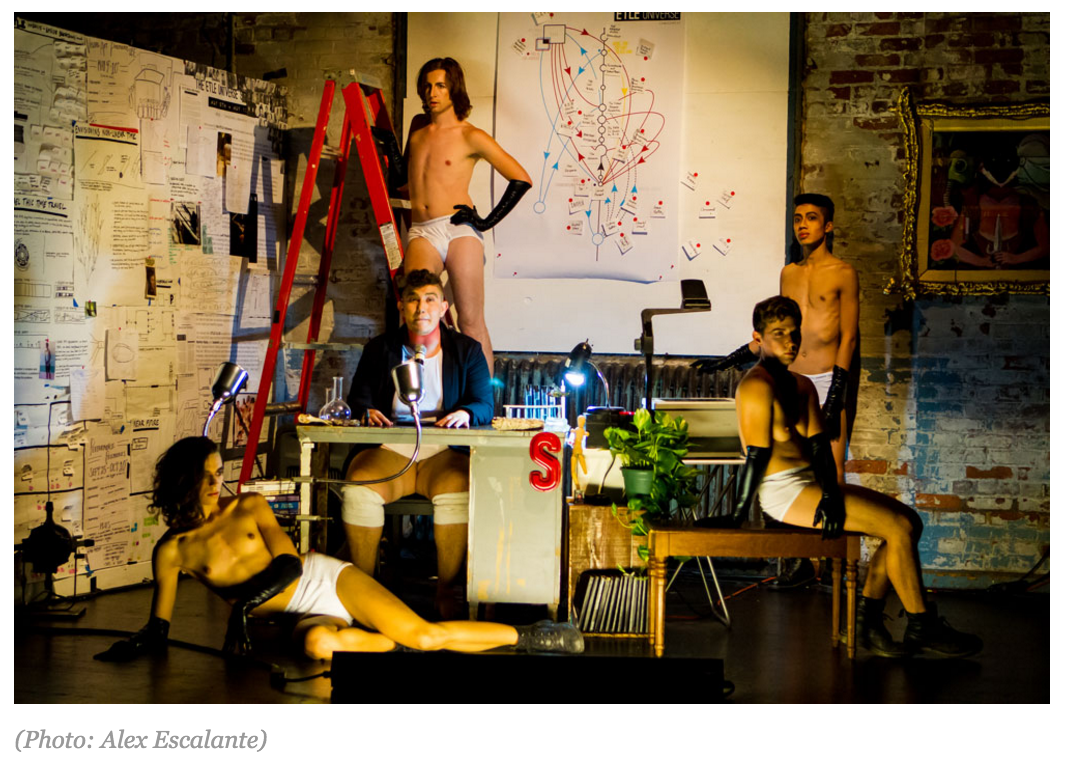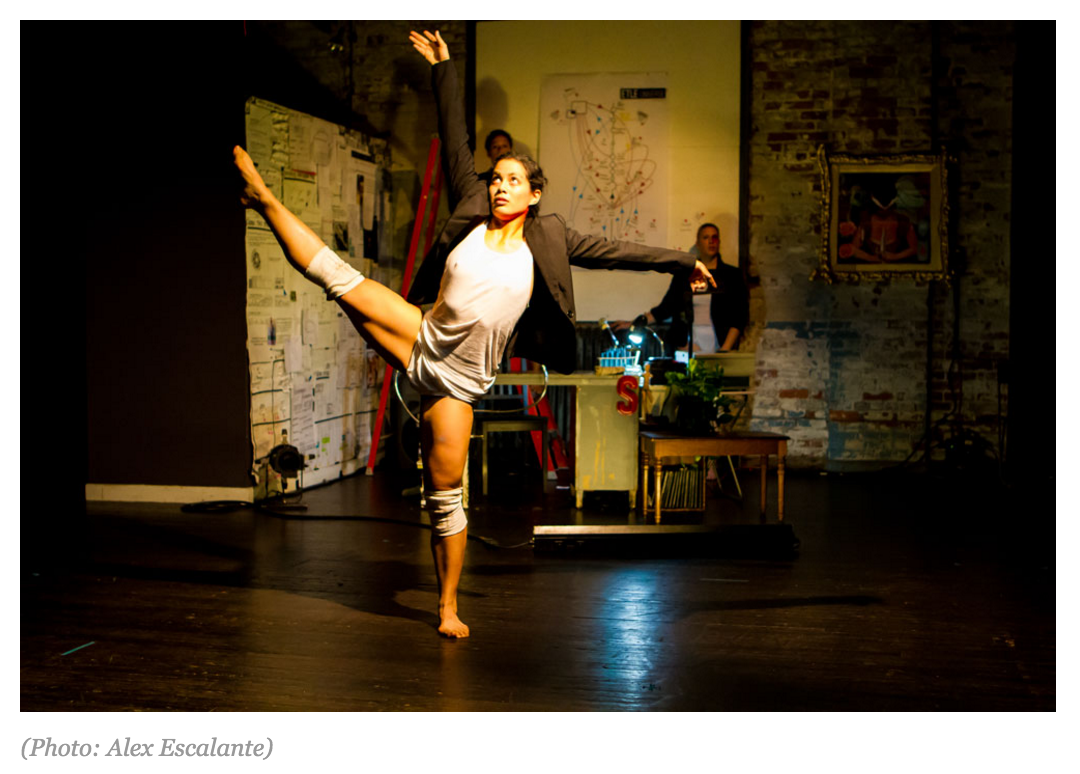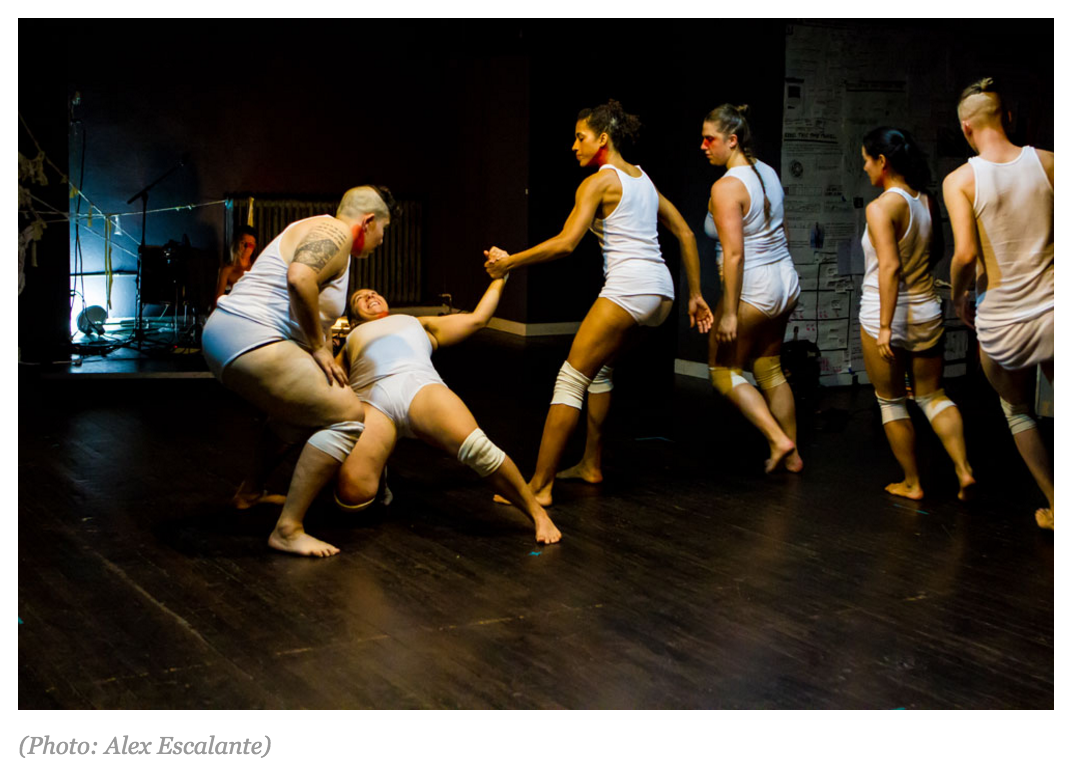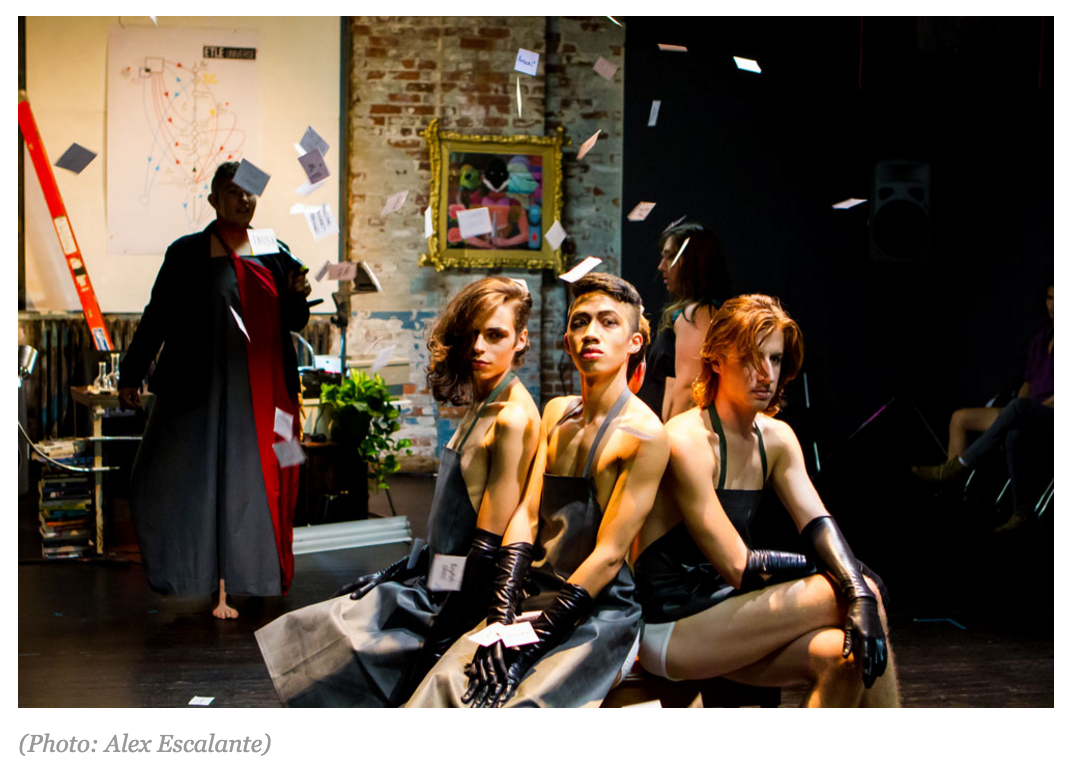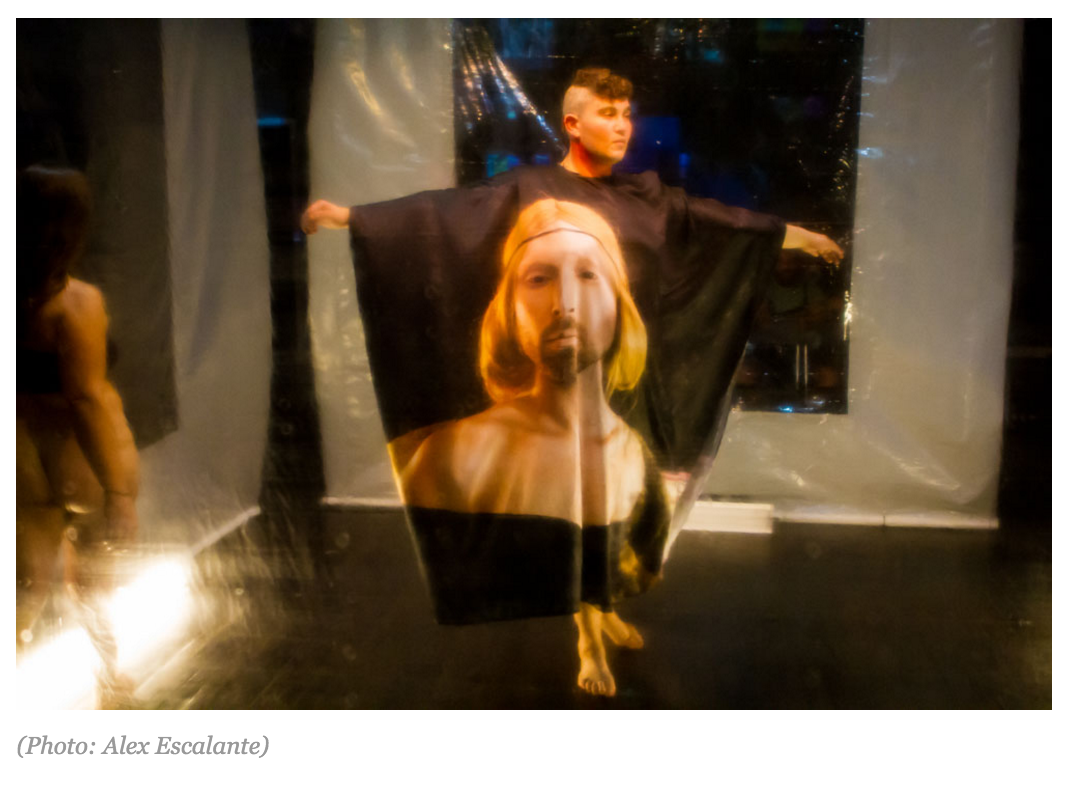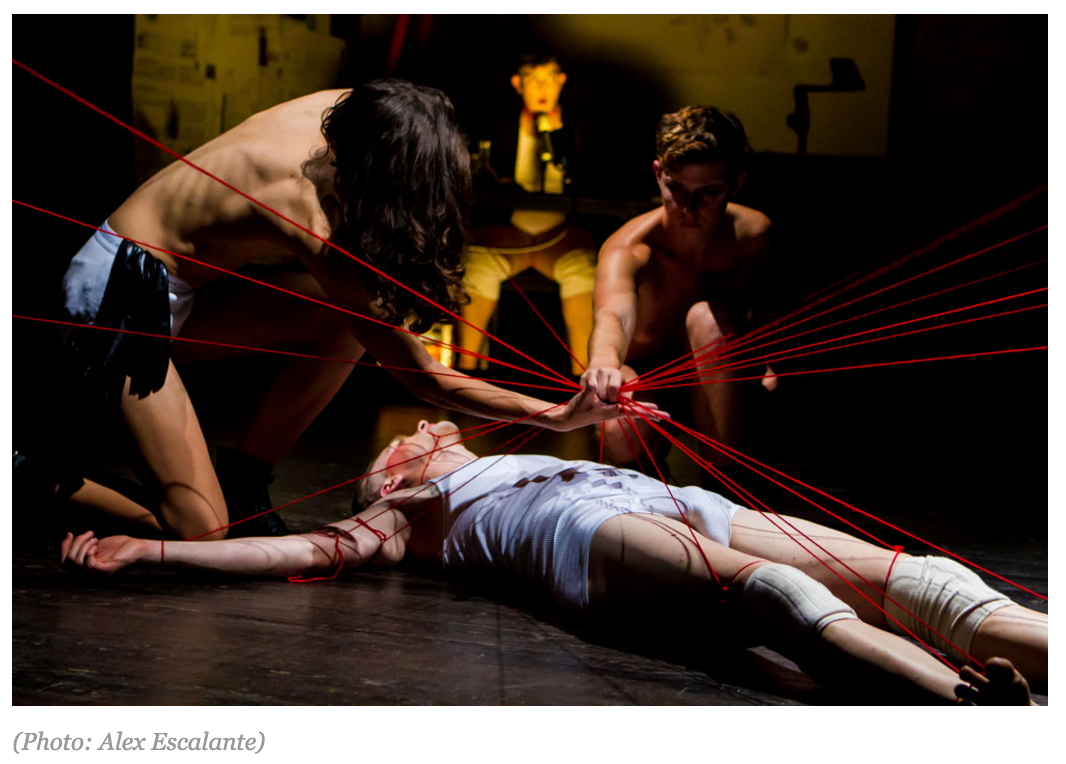Forget Water on Mars, It’s a ‘Queer Feminist Cyborg Epic Time Travel Thing’
by Maggie Craig
[The original article can be found here.]
A “queer feminist cyborg epic time travel thing” has taken residency at the Loft on Classon for a three-week festival that presents the culmination of the ETLE Universe, a maximalist work of science fiction instigated by Sarah A.O. Rosner in 2012. Bedford + Bowery covered the ETLE Universe this past spring, which saw the unveiling of a graphic novel, 3D-printed rings, and a photography exhibition. Now the collective is showing its final works, including an evening-length performance, a feature-length pornography, a performance of the Universe’s concept album, parties, and lectures (a full listing of showings is available here).
At the center of the project is Rosner’s ETLE and the Anders, a performance that she says exists in a place of unknowing, like the first pages of a sci-fi novel where the reader isn’t sure yet what the world is or what its rules are or how exactly they’re supposed to picture everything.
In ETLE and the Anders, Rosner explores how a body rooted in live performance can create an imaginary vision of the future that’s free from the gender binary, sees time as both circular and infinite, and is inherently feminist. In the near future of Rosner’s ETLE Universe, women and queers, after being stripped of their natural ability to time travel by an evil corporation, start a violent revolution that kills all of the men. In the far future, ETLE time travels back to the present to inspire Rosner to create the works of the ETLE Universe, which in turn sets in motion the events that lead to the revolution.
Beyond this cyclical narrative, the timeline and actual plot of the ETLE Universe is massive, detailed beyond comprehension, and never really clear. But that seems to be the point. In the first minutes of ETLE and the Anders, the audience is barraged by an overwhelming, disorienting take on opening credits. A performer at the center of the room shouts out ETLE terms or names of the cast and crew while the others launch into definitions or biographies. All of this is happening as they march around the loft, stripping naked and changing costume.
“Who is ETLE?” one of them says, loudly, over the cacophony of lecturing peers. “The truth is, we don’t really know.”
“You must create your own network of understanding,” another says.
The goal, says another, is to “keep humanity alive long enough to evolve.”
In the back of the space, musician Idgy Dean performs a live soundtrack of her concept album for the Universe. The score includes looping beats, vocals and guitar to create a repetitive soundscape that feels primal, mystical, just out of reach.
Rosner said that three years ago she began creating the ETLE Universe after wondering, “Does art really do anything and can it change anything and does it have an actual outcome?” Regardless of the answer, Rosner herself has been unquestionably altered by the experience of making the work.
“I feel like I’m a completely different person than I was three years ago,” she said. “I wasn’t poly, I was identifying as queer but I wasn’t actively queer… I had put myself through a gender studies research but I had a lot of very sexualized views of gender and knew that wasn’t quite right but still was trying to figure out how that was wrong. I feel very grateful for how this project has evolved me and how it has evolved the [A.O. Movement Collective].”
Rosner speaks candidly and humbly about her process, admitting that even as she was trying to use her work to dismantle the gender binary, she was still buying into it, especially in the early stages of the project. For example, a set of characters that she had always thought of as representing a future masculinity in the performance changed just a few months ago to “a more fluid, androgynous gender.” And though there is a notable diversity of bodies in the collective, Rosner says that there’s still so far to go, but that “the failure of that endeavor also exposes what a potential success of that endeavor could look like. The failure to be able to actively articulate the entire ETLE Universe in a way that makes sense exposes what that could possibly be like or exposes the moments when that actually does happen.”
Much of Rosner’s work is founded on the idea of the glitch, which “is this moment of failure that both exposes what success was before it and creates this radically open new possibility for something else. And so in the piece I feel like I’m constantly trying to create these little moments of unknowing, which is maybe also what a glitch is—moments where there’s even a fraction of a second of ‘wait, what?” or ‘wait, how did that connect?’ or ‘why is this happening?’ or something to disrupt this idea that we think we know what’s going on. It’s this moment that presents a chance to go in a different direction or a chance to see something differently. In each failure there’s an illumination of what a success is.”
After the show closes on October 10, the A.O. Movement Collective will be on hiatus until the Spring, but the artifacts of the ETLE universe—the visual art, writing, rings—will be available to see and buy. The porn will be distributed online, the performance art archived.



